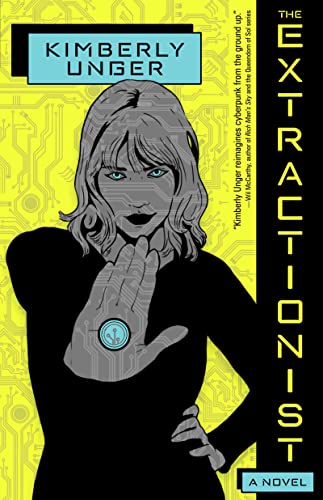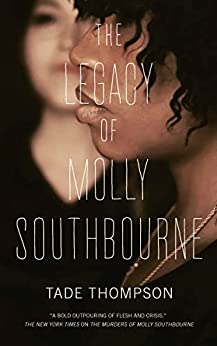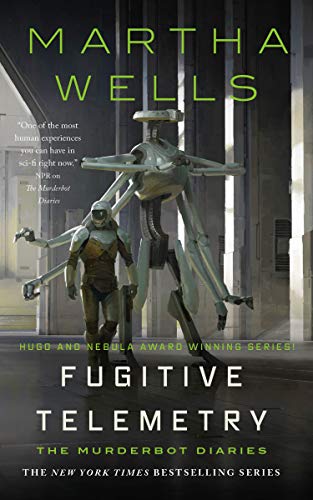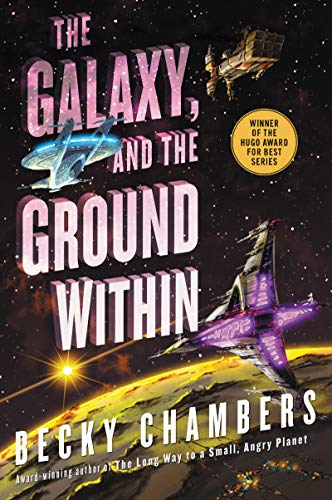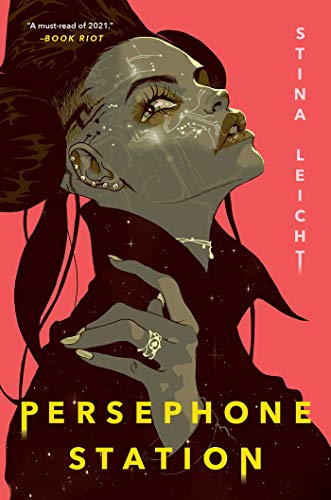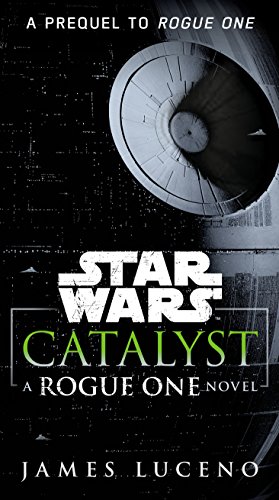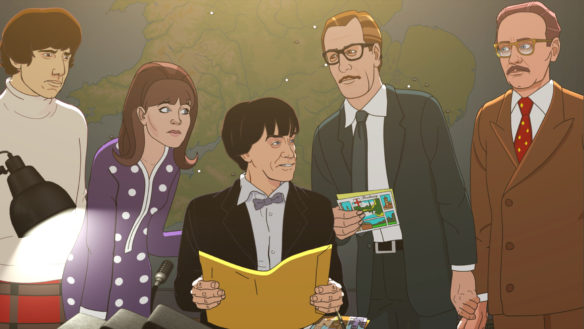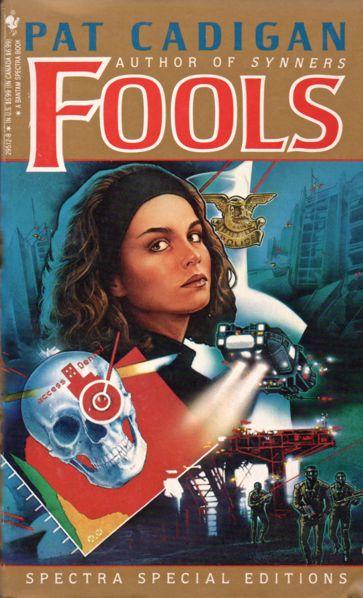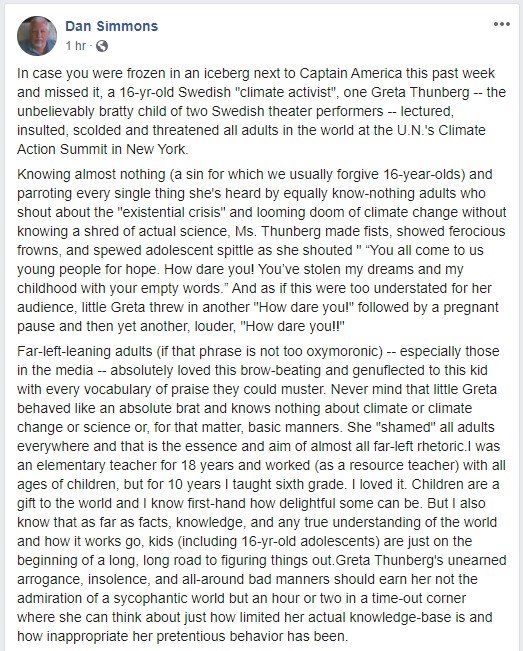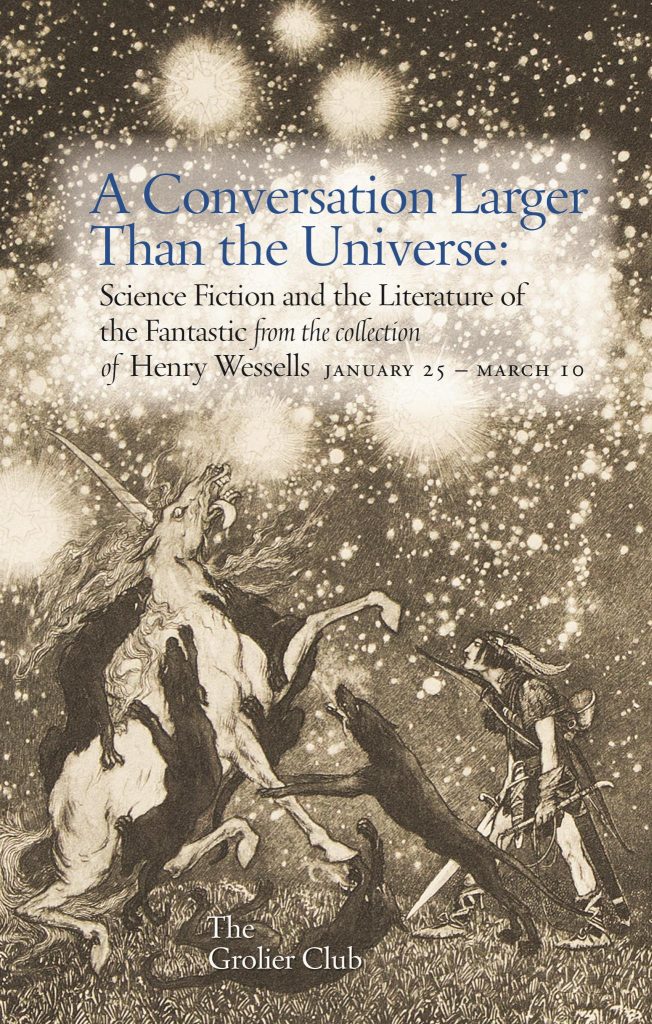By Iphinome: Reading. That’s what I do, I read and I snark things.
Fugitive Telemetry (The Murderbot Diaries) By Martha Wells. Space Opera
This story takes place between Exit Strategy and Network Effect.
It all starts with a body of a human–the dead kind–dumped in a hallway. This doesn’t happen often on Preservation station, station security is used to dealing with intoxicated humans not conducting murder investigations. Because they have the same sort of media infused-preconceptions about SecUnits as most other humans and augmented humans, they see Muderbot as, well, a murder bot, a possible suspect. This leaves them less than enthused about accepting help from a dangerous weapon that, even if innocent, presents a far greater danger than any single human or augmented human murderer.
What’s one murderer compared to the threat presented by a murderbot?
Murderbot could leave this one alone, it knows it didn’t kill the human, but not knowing who the killer or the identity-obscured victim is means not knowing if GrayCris is involved or if Dr. Mensah is in more danger. Gotta get that risk assessment down.
Fugitive Telemetry is a classic whodunit wherein Murderbot must work with the humans, augmented humans–even a few “free bots”–collect evidence and eliminate suspects (not that way!) alongside humans who know exactly what a SecUnit is. Humans who wonder if Murderbot did the murder.
Don’t worry, Murderbot still finds time to shoot things with the energy weapons in its arms, attempt a daring rescue, and watch Sanctuary Moon.
All the stuff we know and love is in there.
Let’s look at my notes.
16% Security insists that Murderbot can’t be stealth, it has to be out loud and proud in its feed identifier so people don’t get fooled. Two cycles later, not being satisfied with outing Murderbot as a SecUnit to any passers-by, a photo is published in the planetary newsstream.
Won’t that be fun when the next rogue SecUnit comes through and gets instantly read?
21% Ooooo is this the bot on the cover?
36% Someone else can hack Preservations crappy surveillance
40% Oh, maybe this is the cover bot. So many bots.
70% Time to shine baby. This is a job for Murderbot.
The inclusion of a heroic SecUnit really made this story work, more writers should do it.
I liked it. I always like Murderbot and feel a bit bad about not rating it higher but while Murderbot experiences a bit of personal growth we’ve already seen the results of in Network Effect. There’s a disadvantage in having this released non-chronologically.
Three stars plus a half because Murderbot. Recommended.
The Galaxy, and the Ground Within by Becky Chambers. Space opera.
This story takes place at the truck stop in Little America Wyoming where a group of travelers are trapped by a blizzard. No, wait. I’m being told that this book takes place under a small habitat dome at the Five-Hop One-Stop on the planet Gora, an airless rock that serves as a convenient anchor for five interstellar tunnels. My bad.
The proprietor is Ouloo a Laru, (a quadrupedal mammalian species with long necks and long fur) helped by her adolescent child Tupo. Three ships are scheduled to arrive for short shopping trips. Her deal is to keep the customers happy and coming back. She’s a sort of suburban business owner.
Tupo, Ouloo’s adolescent child. Xe has created a small natural history museum (on a lifeless planet) and otherwise helps out around the One-Stop in a sometimes sulky and sometimes excited way. Xe’s the moody teenager archetype.
Gapei Tem Seri, an Aeluon (fine scales, no natural hearing). Pei’s still dating Ashby from The Long Way to a Small Angry Planet, still, despite declarations to the contrary, apprehensive about the potential social stigma her people assign to those in interspecies relationships. She’s just gotten a bit of free time and is en route to Wayfarer for a little waterball. Wink wink nudge nudge.
In some ways, Pei represents the partially closeted homosexual. She’s not quite hiding her relationship as much as controlling who does and doesn’t know but she still fears the very real consequences that come with openness. Some Aeolins might be open and comfortable with interspecies sexuality but staying in the closet keeps her employed. In other respects, she’s just a woman making hard choices in the work/relationship/friends balance. Straight people have to figure it all out too.
Roveg, a Quelin (They have shells and lots of legs) exiled from his people. He makes his living as an artist who designs sims. In video game parlance we’d call his genre walking simulators. No plot, just lots of pretty stuff to walk through and look at. He’s on his way to an important and very time sensitive appointment.
For Pei Roveg represents a cautionary tale. He knowingly violated the taboos of his people, now he’s paying the price far from home, a pariah to other Quelin. To Tupo he’s the wise and understanding adult, to Speaker he’s someone who can empathise and to Ouloo he’s low maintenance.
For himself, he’s apprehensive about his looming appointment and while usually possessed of a healthy outlook regarding his status and some of the opportunities it allows him there’s some melancholy there. You can make the best but can’t always have all the things you want.
Speaker an Akarak. The species made an appearance in The Long Way to a Small Angry Planet as the raiders in mech suits who infiltrated Wayfarer and injured Ashby. The Mech suits are necessary to survive in an oxygen atmosphere and thematically exist to create an outsider status, physical separation for a member of a lesser-known and distrusted species.
A life of mistrust and misunderstanding along with an uncountable number of microaggressions leave Speaker’s feather easily ruffled, er, so to speak, but she’s practiced at not showing it. She’s a very kindhearted person and her main concern is getting off Gora and back to her ailing sister who remained in orbit while Speaker made a supply run.
Kyra described this as The most Becky Chambers plot of all time. Soooooooooooo apt.
While our three travelers are making scheduled stops between wormhole tranists an accident happens. The planet’s orbital infrastructure undergoes catastrophic failure, the linkings are down and space is full of junk. It’s not safe to leave, and anyone who tries is going to get so many points on their license that they’ll be walking between planets for the rest of their lives.
Our characters are stranded in Ouloo’s habitat dome with strangers around them and their own problems weighing. Imagine the modder colony visit in Angry Planet but as a whole book. They begin in the overly polite and guarded way as one does when in close confines with strangers. They talk, they hold different opinions, they gain understanding, they bond.
And yeah. There’s a complete lack of humans which makes things a bit more interesting. The characters do a far better job of drawing you in than anyone in Spaceborn Few which seriously dragged. All the themes of the previous books are there. As a worldbuilding bonus, we get some backstory on why the Quelin were such dicks to Corbin in the first book.
It didn’t have the same charm as the first book and didn’t have the same power as the second. On the bright side, it wasn’t as mind numbingly boring as the third and it managed to do what it intended. I cared about these people. It was pretty good.
Recommended if you like Becky Chambers, not recommended if you’re looking for action.
- Liked The Long Way to a Small Angry Planet. 4 stars.
- Loved, love, will always love A Closed and Common Orbit. 5 stars.
- Record of a Spaceborn Few bored me, not enough to deduct a star though. 3 stars
- The Galaxy and the Ground Within. It didn’t bore me, also didn’t quite meet the threshold for a fourth star. 3 stars.
Persephone Station by Stina Leicht. Space opera.
Our protagonist, Angel–introduced in chapter 3–leads a mercenary squad of former corpse soldiers. Their job was to go on suicide missions and then get revived later. They keep doing that till the cumulative physical and psychological damage makes them unfit for military service. Good times. Now she and her team work for Rosie, a local crime boss. Their current assignment is an assassination which goes according to plan until a second team pulls off another assassination–the planet’s corporate owners’ local head honcho–at the same party. Angel’s group along with a woman from the party named Kennedy Liu make their escape.
Knocking off someone for Rosie is something Angel can get away with. Criminal knocks off rival is an old story, but this second death means that not only does Angel have to explain the situation to Rose but being blamed for assassinating a corporate VIP buys a whole load of trouble.
Rosie owns a bar that they use as a base for extra-legal dealings. Don’t get your hopes up, this isn’t space Casablanca. Then again, space Casablanca would be like Barb Wire and that sucks so maybe do raise your hopes a little bit.
Angel makes her way there and Rosie is quite forgiving, she even has a new job that will get Angel and company out of town. Protect a very secret town of Persephone’s native sentients–so secret that Rosie and the Serrao-Orlove corporation plus any number of smugglers know all about it–from an impending invasion by corporate mercs.
It’s another suicide mission and this time no revivification boxes.
The B-plot centers on Kennedy Liu, she’s an AI in a highly illegal human appearing body. People in these stories always get it wrong. Things not to give AIs: Nukes. Things that it’s okay to give AIs: Bodies that appear human, cat pics. She comes to Persephone after receiving a call for help and gets drawn into the Angel/Rosie versus Serrao-Orlove struggle.
Chapter one: This is a prologue, it doesn’t call itself a prologue even though the epilogue calls itself an epilogue. It concerns a people called the Emissaries, a species with some shapeshifting abilities attempting to negotiate with the planet Persephone’s owners, the Serrao-Orlove corporation, and in particular one corporate representative Vissia Corsini who has betrayed the Emissaries in the past. It goes badly for the Emissaries and Vissa commits a war crime.
And it’s completely skippable. Our protagonist learns about the Emissaries and Vissia’s cruel nature as the story progresses.
Chapter two: It’s a couple pages long and mostly serves as a second prologue. Rosie, a local tavern owner (and crime boss) finds a corpse dropped on their doorstep. They know who the person is and after offering a quick prayer for the dead Rosie continues with their day.
Skippable. The death and the identity of the deceased are revealed to Angel in short order.
Chapter 3: Start here because this is where our protagonist steps on stage.
10% Things started flowing and I was afraid to let myself relax into the story. My notes say this book is like a mechanical bull that keeps trying to toss me out.
That was a lie. My actual written note says “10% now it’s going. Mechanical Bull Book!”
Sophisticated and erudite I’m not.
39% Welcome to Emissarytown. No, that’s emISSARy, not emBASsy. China Mieville’s not here.
We’re not human but we have all the human stuff right down to a standard pre-fab landing bay. Shhh, no one knows we exist and if you need anything we’ll order it for the next regularly scheduled smuggling run.
We know you have a choice when it comes to suicide missions, thank you for choosing Emissaries.
43% “Four women, one man, and two non-binary people approached”
I have so many questions the worldbuilding didn’t address. At no point does the narrative explain how a non-binary person might declare themselves such without stating it. There’s very little information about gender presentation or stereotypes. Rosie is non-binary and wears makeup and skirts. Is it color-coded? How the eff were you able to tell at a glance?
Ah well, not today mechanical bull, not today. Gonna press on.
Retroactive bonus point to Winter’s Orbit which did explain the culture-specific gender signifiers.
76% I’m a leaf on the wind.
It took eight days to get through this book, more than once I had a feeling of dread when reaching for the kindle, would I get bounced again? Not so much, it tried once or twice but if not for the bad taste left by the first two chapters then I wouldn’t have spent the rest of the book with a lingering fear about it all going wrong.
The story was fine. The characters are fine. My complaints are–to my everlasting shame–the complaints of a backseat editor. Some worldbuilding lapses some poor authorial choices in the opening chapters.
Leave that aside and you have an average sci-fi adventure story of the mercenaries decide to stand for something variety.
I could drop half a star for the beginning but I round up anyway so what the hell, three stars.
Catalyst: A Rogue One Novel by James Luceno. Media tie-in, space opera.
A long time ago in a galaxy far, far away…
It is a period of civil war. Separatist systems, led by the Sith Lord Count Dooku, use battle droids to fight The Grand Army of the Republic in a never-ending struggle to control the border worlds. After one battle, Republic operators managed to obtain plans for the separatist ultimate weapon, a battle station the size of a small moon. The side that completes the battle station first will have the power to win the war.
Republic engineer Orson Krennic searches for Galen Erso, the researcher who can complete the weapon, save the Republic, and restore peace and security to the galaxy.
Dah dah dah daaaa daaaa dun dun dunt duhhhh duhhh.
Since this is a media tie-in, readers are expected to be familiar with the first six Star Wars films.
Galen Erso–because of course there’s a Galen, as the length of a genre series increases, the probability of there being a Galen approached one–is a deep thinker. He’s the kind of scientist who stops speaking and ignores people to start scribbling. He’s the kind of scientist who forgets to comb his hair because he’s thinking thank you very much. He’s also the kind of scientist who doesn’t want his work used to create weapons despite his specialty being crystals and power generation–exactly what you need to make laser weapons in Star Wars–that’s why he and his wife left Coruscant for the Vallt system where he can sit out the Clone Wars working in the private sector.
The war comes to him in the form of a coup switching the planet to the Separatist cause and the arrest of Erso on fabricated charges with the understanding that if he just transfers his loyalties, he’ll go free. At this point, Galen switches from absent-minded professor to expert in psychology and influence techniques–which totally isn’t going to last–allowing him to hold firm even when his wife Lyra gives birth to their daughter Jyn while he’s in captivity.
Lieutenant Commander Orson Krennic, Republic Corps of Engineers, and ambitious member of the Special Weapons Project sees getting his old school chum Galen involved as the key to his eventual rise. With a combination of money, threats, and plausibly deniable sabotage, smuggler Has Obitt is convinced to work as Krennic’s agent. They rescue Erso who, while thankful to see his old buddy and get a ride out of prison, doesn’t want to work for the government.
Krennic arranges for Erso to both be under suspicion for his time spent with Separatists and thankful for the only crappy non-military job available to him and he finishes out the war-making communication devices.
Despite the Jedi and Dooku being gone, the Galactic Empire still doesn’t know peace. Pockets of resistance remain along with anarchists and criminals, the battle station still needs completion and Krennic finally has the leverage he needs over his old friend. Kyber crystals, hoarded and hidden by the Jedi, now available for research. Perfectly above-board civilian research.
Project Celestial Power, the Emperor’s dream Galen’s told. Renewable energy, unimaginable amounts for developing worlds using Kyber crystals. Will Erso lead the project? He will.
Catalyst was released ahead of Rogue One as a way of building hype and giving bookish fans easter eggs to search for. It’s a tough situation, being unable to spoil the future, being very limited even in how much you can telegraph when the movie’s where the money comes in and the author’s job is to combine storytelling with ad copy. I’m not sure it was a great idea but only the Disney accountants know for sure.
Early chapters might fool the reader into thinking Galen Erso is the protagonist. It’s Krennic. Story events focus on his lies, power grabs, struggles against Tarken,, and the bodies of anyone who stops being useful. His I’m your friend approach to Galen Erso echos Palpatine with Anakin and his trail of bodies echoes Vader with anyone who disappoints him. But the Sith lords embrace evil. Orson Krennic’s actions come off more creep than mustache-twirling.
Call it the banality of darksideism.
A few notes.
My spell-check already knew the word Coruscant. That tells you all you need to know about Star Wars and popular culture.
Dropping a beast of a word like somnambulantly into the middle of a sentence is a good way to bounce a reader out of the text, at least momentarily.
There’s an odd spate of excess scenery detail for a couple chapters around 70% of the way through. There hadn’t been as much earlier in the book so it came out of nowhere.
Tarkin makes a dad joke, Tarkin should not make dad jokes. My brain hurts.
Catalyst ends at 87% on my kindle. Any readers keeping track of how much story is left be aware that the last 10% is the preview for another Star Wars book.
As a stand-alone novel, I’d give it two stars, much is left unexplained. As a media tie-in where you’re expected to know and judging by the standards of other media tie-ins, three stars.

